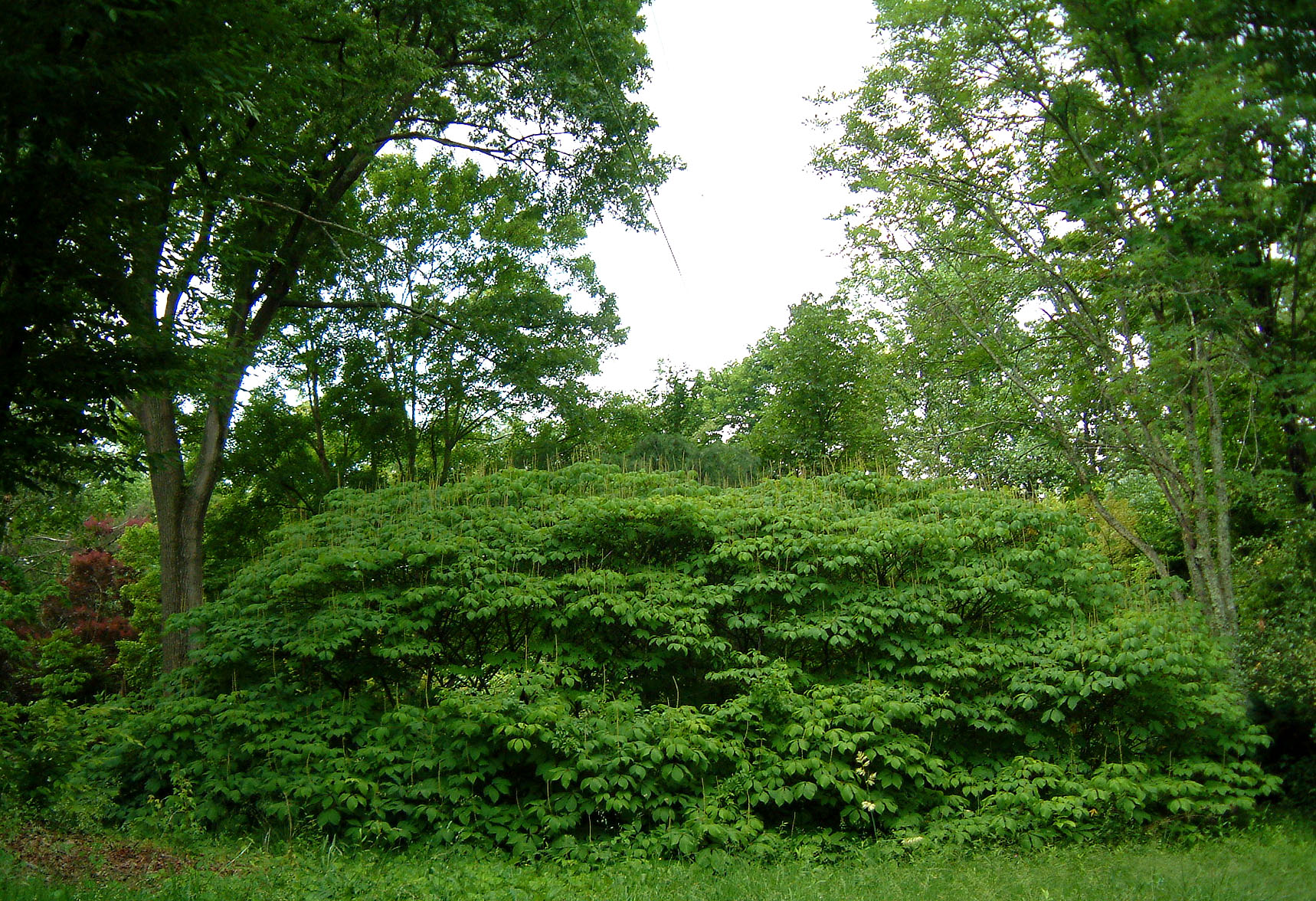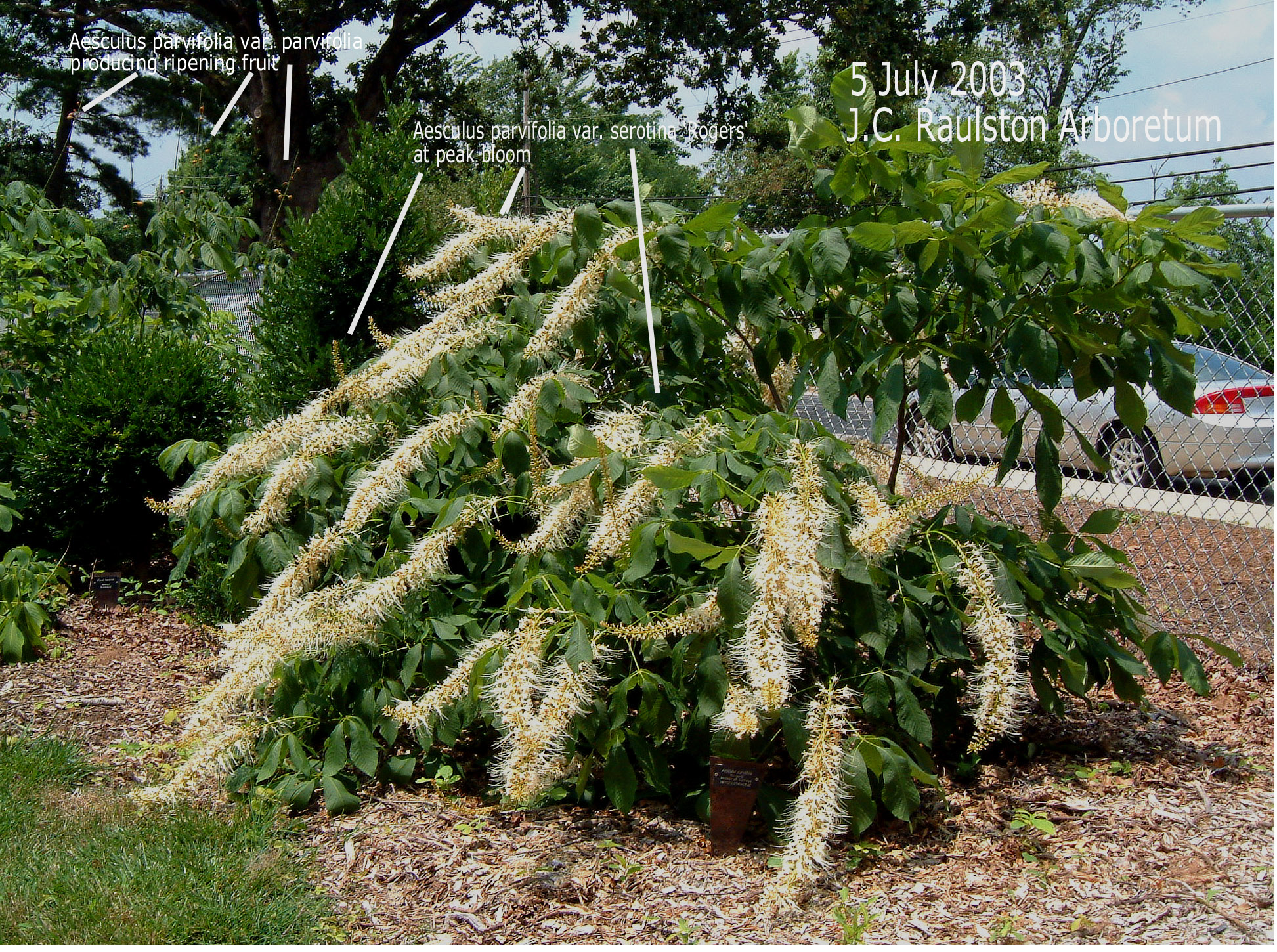NOS
AESCULUS
PARVIFLORA
PAGE
Copyright 2003. Laurence C. Hatch.
All Rights Reserved.
All downloading, printing, saving to media, imaging, screen capture, or offline
use is prohibited.
Duplication by any means, method, or technology is unlawful.
The NOS reserves the right to monitor and report all unauthorized use of this
file.
 click
image to enlarge
click
image to enlarge
Boxerwood Gardens, Lexington, Virginia (boxerwood.org)
2003. This is the largest and best-shaped plant of the typical var. parvifolia I
know. Wished I'd caught it in bloom but maybe another time. Just imagine each of
those erect green stalks carrying clean white bottlebrush flowers! This one
plant is easily 20 feet wide and is such a remarkable plant I'd encourage
everyone to visit this remarkable collection of rare woody plants just to see
this one plant. Of the species, W.J. Bean says it so well: "There are few
shrubs about which more could be said in favor than this...no better plant could
be recommended as a lawn shrub, especially for places that are visited in August
- such as many pleasure resorts".
Aesculus
parviflora var.
parviflora
ns: this is "species typical" of gardens.
bt: 2-4 weeks before var. serotina
Aesculus
parviflora var. serotina (f. serotina)
ht: larger than var. parviflora, known to reach 20 ft. at the
Arnold Arboretum and elsewhere.
bt: blooms 2-4 weeks after species, extending the effect when
both varieties are interplanted.
infl: longer panicle than var. parviflora, sometimes drooping or cascading from
the extra weight, especially
infl: after rain or in shade where plants are thinner
lc: distinctly blue-green below which is not always true of var.
parviflora.
li: J. Arnold Arb. 1928: 30
geo: first known from Alabama USA c. 1919.
so:
Woodlanders
 cclick
image to compare 'Rogers' with var. parviflora
cclick
image to compare 'Rogers' with var. parviflora
JC Raulston Arboretum. July 2003. There are very woody plant species where one
cultivar peaks a full month after the typical species. And in such a lovely
species the interplanting of the two taxa gives one double the days of interest.
The two floral calendars do not overlap so it is not a typical "extension of
bloom period" situation. Note the longer, drooping infloresences of this
selected clone. Typical species or var. parviflora often has inflorescences half
to two-thirds of those shown here. The white saturation is greater as a result.
This is a truly unique and highly recommended cultivar for use in temperate
gardens around the world. Dr. McDaniel was a genius for selecting and naming
truly memorable cultivars and this is one of his very finest choices.
Aesculus
parviflora var. serotina 'Rogers'
bt: later than var. serotina as typical and much later than var.
parviflora
infl: 18-30 in. long - longer than many var. serotina
or: selected seedling by Dr. J.C. McDaniel of the Univ. of IL
USA. Named for a Dr. Rogers in
or: Urbana IL in whose yard the original plant was planted.
eval: a very useful cultivar for extending the lovely bloom of
this species mucher later into the year.
Aesculus
parviflora (late blooming strain)
ns: later-blooming plants almost always belong to var. serotina.
so:
Woodlanders
 click
image to enlarge
click
image to enlarge